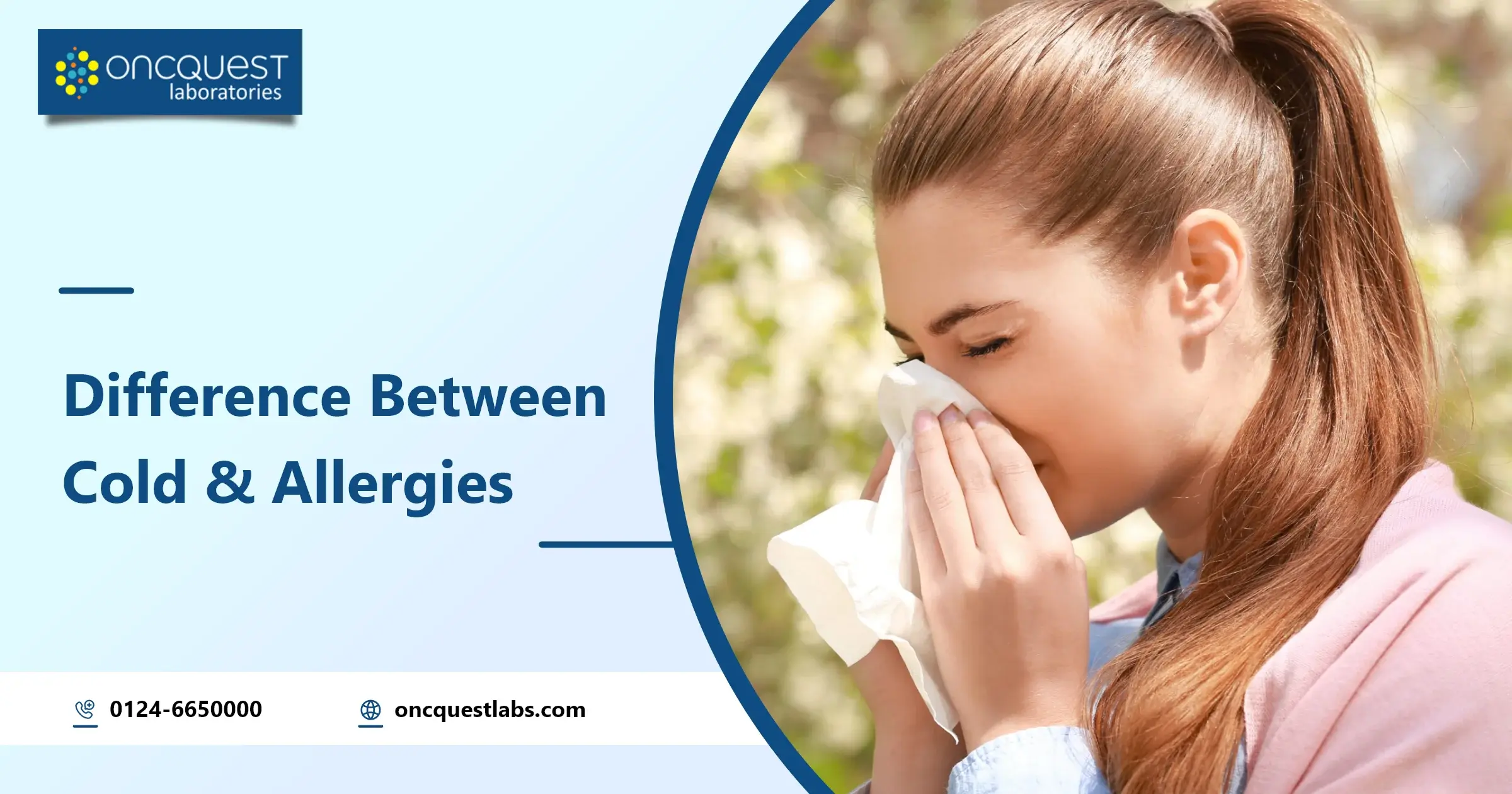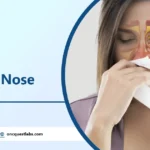As the seasons ebb and flow, ushering in winds of change, many individuals find themselves grappling with a familiar set of symptoms that often blur the lines between a common cold and allergies. The sneezing fits, nasal congestion, and persistent coughs can be perplexing, leaving one to wonder: is it a viral invasion or the body’s hypersensitive response to harmless allergens? This article embarks on an insightful journey into the subtle nuances that distinguish colds from allergies, unraveling the mysteries behind their onset, symptomatology, and management. As we navigate through the intricate web of rhinoviruses, immune system overreactions, and seasonal triggers, a clearer understanding emerges, empowering individuals to discern the peculiarities of these prevalent conditions and make informed decisions about their health. Join us in this exploration of the captivating interplay between the common cold and allergies, where science meets everyday sniffles, and where knowledge becomes the compass in the quest for relief and well-being.
Contents
Understanding the Common Cold
The common cold, caused primarily by rhinoviruses, is a contagious viral infection that targets the upper respiratory tract. Rhinoviruses thrive in colder temperatures, making the common cold more prevalent during the fall and winter months. The transmission of the virus occurs through respiratory droplets, often spread by coughing or sneezing, as well as through direct contact with infected surfaces.
Symptoms of a cold typically include:
- Sneezing: A common initial symptom, sneezing is the body’s natural response to rid the nasal passages of irritants.
- Congestion: Nasal congestion arises as a result of inflamed blood vessels and increased mucus production, leading to a stuffy nose.
- Runny Nose: Excessive production of thin, watery mucus is a hallmark of the common cold.
- Sore Throat: Irritation and inflammation of the throat are common, contributing to discomfort and pain.
- Coughing: A persistent, dry cough may develop as the virus irritates the respiratory tract.
- Fatigue: Cold symptoms can induce a general feeling of tiredness and lethargy.
Understanding Allergies
Unlike the common cold, allergies stem from an overreaction of the immune system to harmless substances known as allergens. Common allergens include pollen, dust mites, pet dander, and certain foods. Allergic reactions can occur year-round, depending on the specific allergen and the individual’s sensitivity. While allergies can manifest at any age, they often emerge during childhood or adolescence.
Key symptoms of allergies encompass:
- Sneezing: Similar to colds, allergies can trigger frequent bouts of sneezing.
- Congestion: Allergic reactions can lead to nasal congestion, resulting from the release of histamines that cause blood vessel dilation.
- Runny Nose: Thin, clear nasal discharge is characteristic of allergies, differentiating it from the thicker mucus produced in colds.
- Itchy Eyes and Throat: Allergies frequently cause itching in the eyes and throat, a symptom not commonly associated with colds.
- Coughing: While coughing can occur with allergies, it tends to be less persistent and dry compared to the cough associated with colds.
- Fatigue: Chronic fatigue is less common in allergies, but it can manifest if symptoms are severe or persistent.
Allergies vs Cold – Differentiating Factors
Cold and allergies are both common health issues that share some overlapping symptoms, but they are distinct conditions with different causes and treatments. Understanding the differences between colds and allergies can help individuals manage their symptoms more effectively.
Several key factors can aid in distinguishing between a cold and allergies:
Cause:
- Cold: Colds are caused by viral infections, most commonly rhinoviruses. Other viruses, such as coronaviruses and adenoviruses, can also contribute to colds.
- Allergies: Allergies, on the other hand, result from the immune system reacting to harmless substances (allergens) such as pollen, pet dander, dust mites, or certain foods.
Onset and Duration:
- Cold: Colds often have a gradual onset, with symptoms worsening over a day or two. They typically last for about 7-10 days but can linger longer.
- Allergies: Allergic reactions can occur suddenly, especially when exposed to allergens. Allergy symptoms may persist for an extended period, as long as the person is exposed to the triggering allergen.
Symptoms:
- Cold: Common cold symptoms include a runny or stuffy nose, sneezing, coughing, sore throat, and occasionally a fever. Body aches and fatigue are also common.
- Allergies: Allergic symptoms encompass sneezing, runny or itchy nose, watery eyes, and sometimes skin reactions like hives or eczema. Unlike colds, allergies rarely cause fevers or body aches.
Fever:
- Cold: It’s not uncommon to experience a low-grade fever with a cold, especially in children. Fever is usually a sign that the body is fighting off an infection.
- Allergies: Fever is not a typical symptom of allergies. If someone has a fever, it’s more likely due to an infection rather than allergies.
Duration of Symptoms:
- Cold: Symptoms often peak after a few days and then gradually subside over the course of a week or two.
- Allergies: Symptoms may persist as long as the person is exposed to the allergen. Seasonal allergies can last for weeks or months, depending on the duration of the allergen exposure.
Seasonal Variation:
- Cold: Colds can occur at any time of the year but are more common in the fall and winter.
- Allergies: Allergies can be seasonal (e.g., pollen allergies in the spring) or perennial (year-round), depending on the type of allergen.
Treatment:
- Cold: Treatment for a cold is generally focused on relieving symptoms. Rest, hydration, over-the-counter cold medications, and sometimes antiviral medications (for certain viruses) may be recommended.
- Allergies: Managing allergies involves avoiding allergens when possible and using medications such as antihistamines, decongestants, or nasal corticosteroids to alleviate symptoms. Allergy shots (immunotherapy) may also be recommended for long-term relief.
Understanding these distinctions can be helpful in determining the appropriate course of action for relief and management. If symptoms persist or worsen, consulting with a healthcare professional is advisable for an accurate diagnosis and tailored treatment plan.
Management and Prevention:
Both colds and allergies share some common management strategies, including:
- Rest: Giving the body adequate time to recover is crucial in managing symptoms for both conditions.
- Hydration: Staying well-hydrated helps alleviate symptoms and supports the body’s natural healing processes.
- Symptomatic Relief: Over-the-counter medications, such as decongestants and pain relievers, can provide relief from symptoms in both colds and allergies.
- Avoidance of Triggers: For allergies, identifying and avoiding allergens is a key preventive measure. This may involve using air purifiers, keeping living spaces clean, and minimizing exposure to specific substances.
- Vaccination: While there is no cure for the common cold, getting vaccinated against influenza can prevent a related respiratory infection and reduce the severity of symptoms.
CONCLUSION:
In conclusion, while colds and allergies share some common symptoms, a nuanced understanding of their distinct characteristics is essential for accurate diagnosis and effective management. Recognizing the subtle differences in symptomatology, understanding the underlying causes, and implementing appropriate prevention and treatment strategies are vital steps in navigating the challenges posed by these prevalent conditions. As individuals become more informed about the intricacies of colds and allergies, they can make empowered decisions regarding their health and well-being, fostering a greater sense of control over these often-unpredictable ailments.





